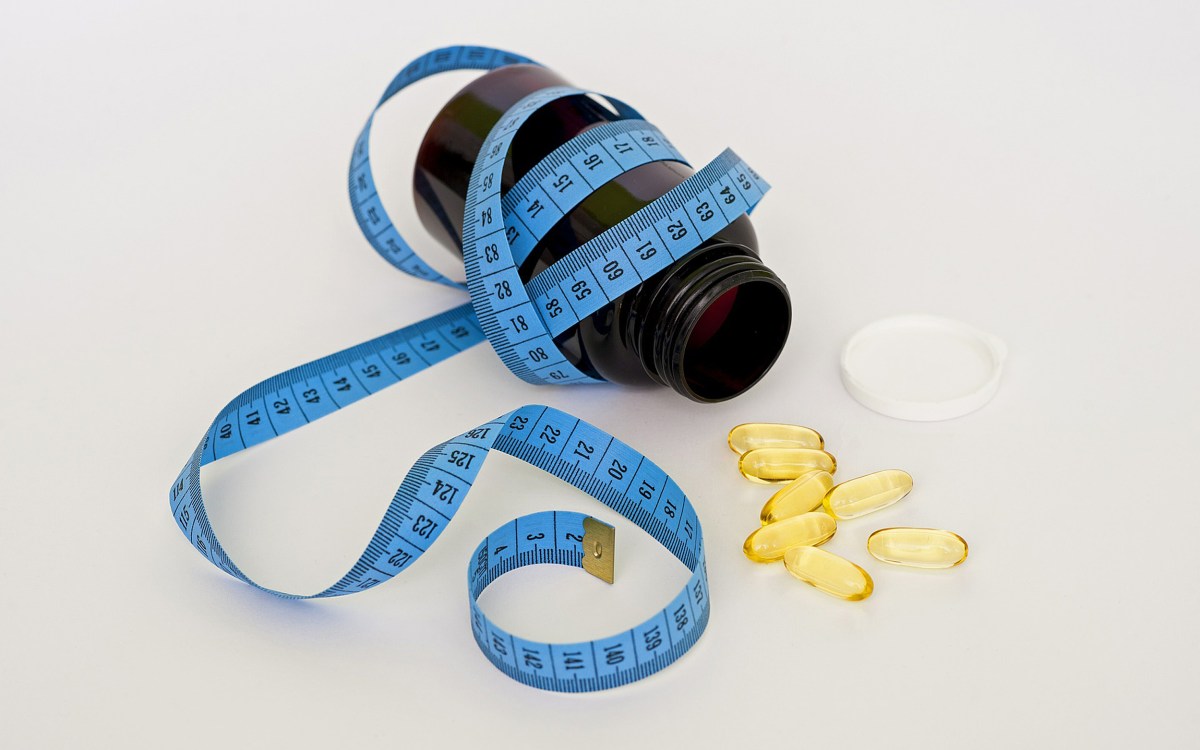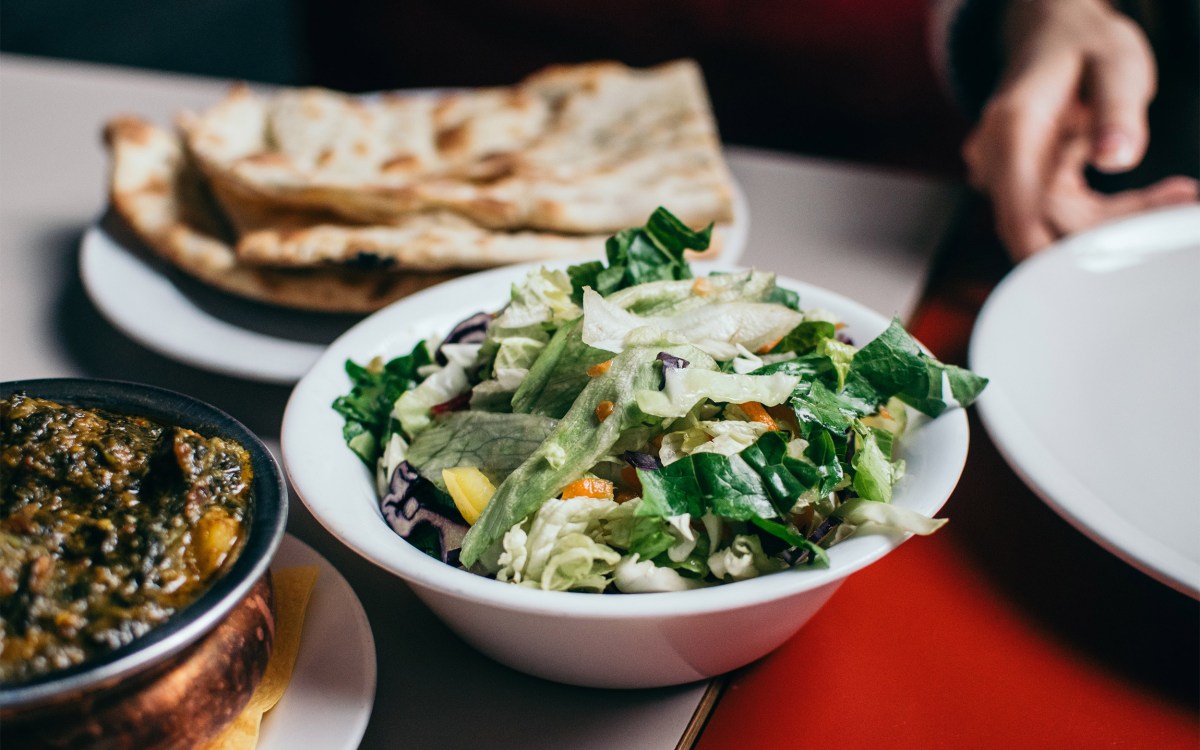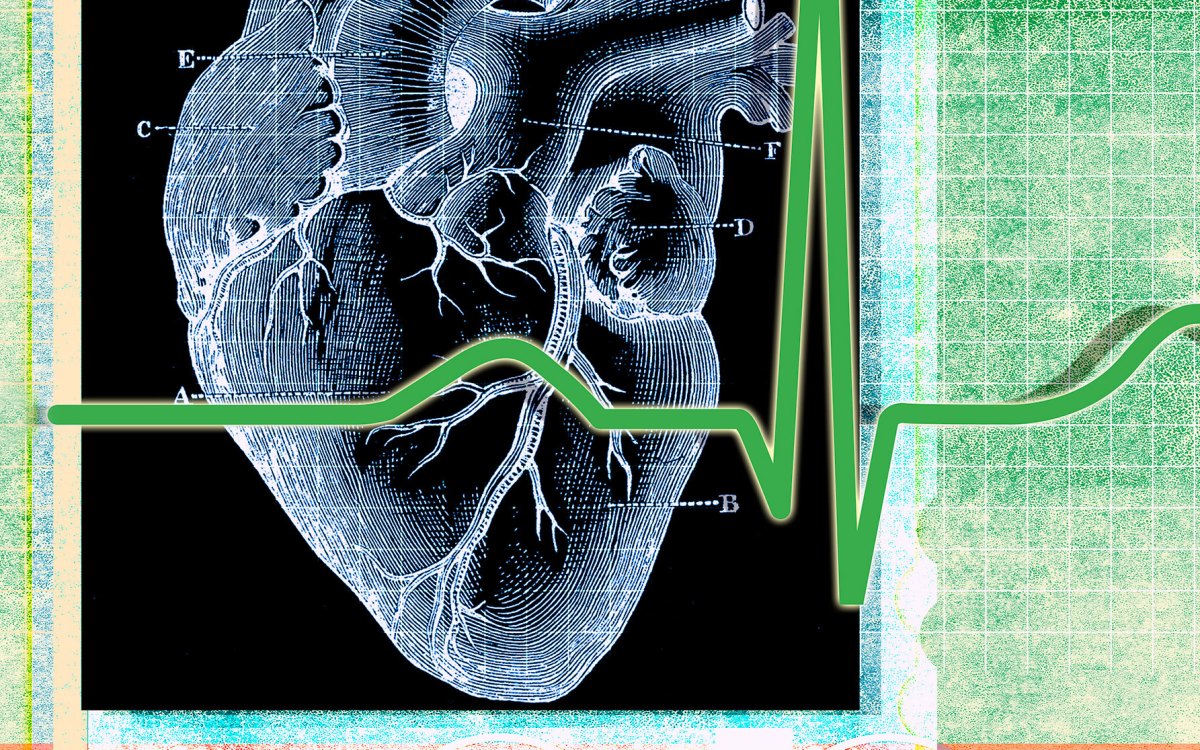How weight-loss industry profits on shame
Cathy O’Neil, author of award-winning ‘Weapons of Math Destruction,’ examines ways humiliation is weaponized — and why
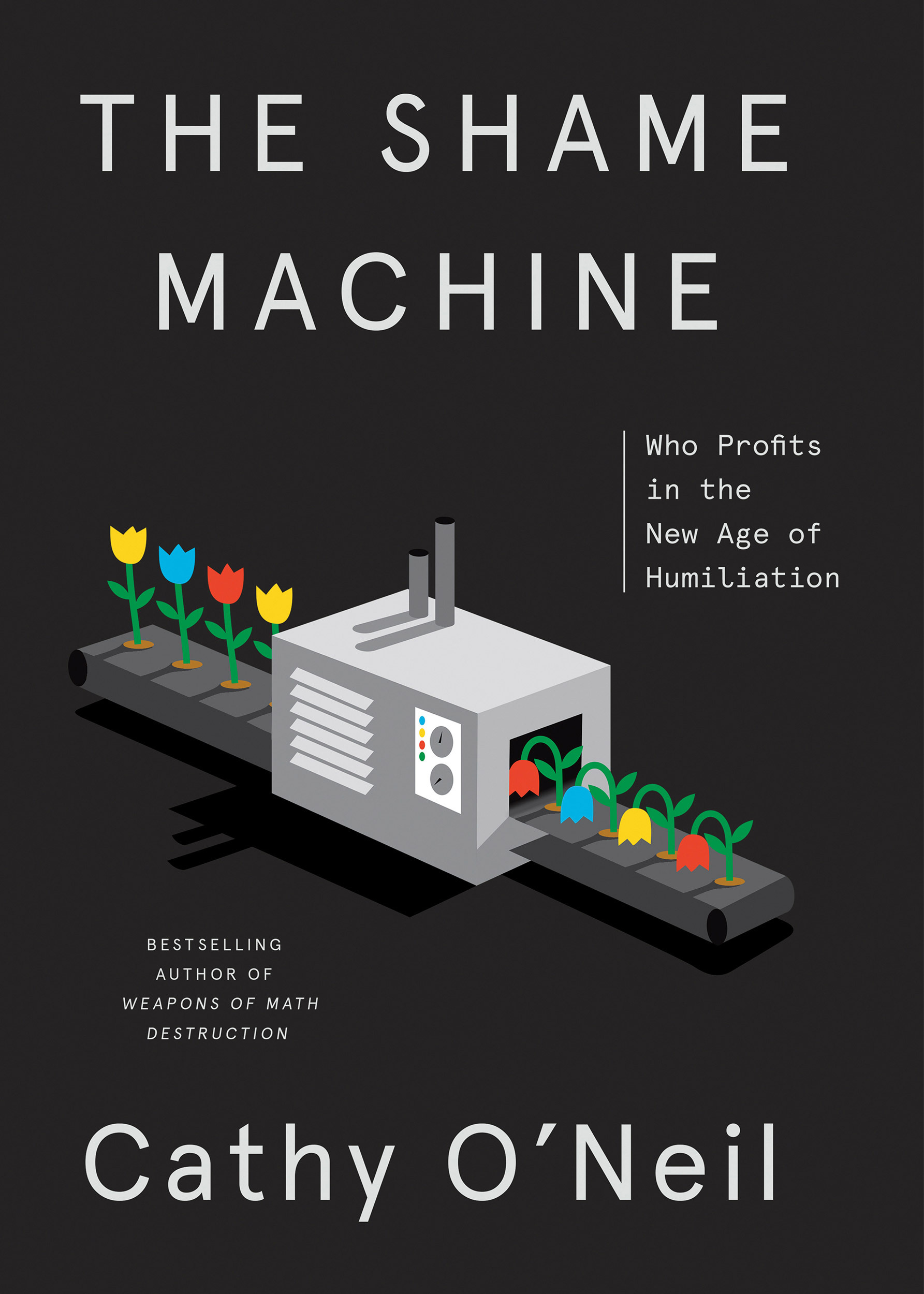
©Random House
Excerpted from “The Shame Machine: Who Profits in the New Age of Humiliation” by Cathy O’Neil, Ph.D. ’99.
To our human problem-solving nature, diets just make so much sense. The numbers seem to add up. And they also fit neatly into traditional Western values. If you suffer and endure the hardships of hunger, a thin body is your recompense. Being thin, after all, is viewed as a choice. Having made the right one, which is difficult and requires discipline and righteousness, you can strut your narrow waist size to signal virtue. You can have pride, which in terms of psychic suffering is the polar opposite of shame.
Trouble is, diets rarely “work” — at least when the promise is to transform a fat person into a thin one forever. For most obese people, diets hurt more than they help. After sifting through voluminous records from the final quarter of the 20th century, UCLA researchers found that between one-third and two-thirds of people who lost weight while dieting did not just regain the pounds in short order. They piled on more. The question for most dieters wasn’t whether the lost pounds would return, the researchers wrote, but only how long it would take.
Yet failed formulas have by no means stopped weight loss from growing into a monster $72 billion industry in the United States. It doesn’t cure the epidemic of obesity but instead grows with it. At last count, the adult obesity rate in the United States was 42.4 percent, and more than 100 million Americans were on a diet.
The obesity challenge, in fact, is global, and the cause remains a mystery. Even wild animals, by some accounts, are gaining weight. People come up with all kinds of theories, from an atmosphere coursing with endocrine-disrupting chemicals to responses within our cells to perceived threats. These might eventually tell us why so many of the world’s creatures are getting fat.
Of course, there are endless explanations for humanity’s susceptibility: jumbo portions in restaurants, Double Stuf Oreos, too much time slumped on the couch, the ubiquity of fast food, the demise of the family meal, even the decline in smoking. These and countless other factors combine with the stubborn workings of the human body to create the problem, but no one can say exactly how. “Obesity isn’t a disease of willpower; it’s a biological problem,” says Dr. George Bray, a professor at Pennington Biomedical Research Center at Louisiana State University. “Genes load the gun, and environment pulls the trigger.”
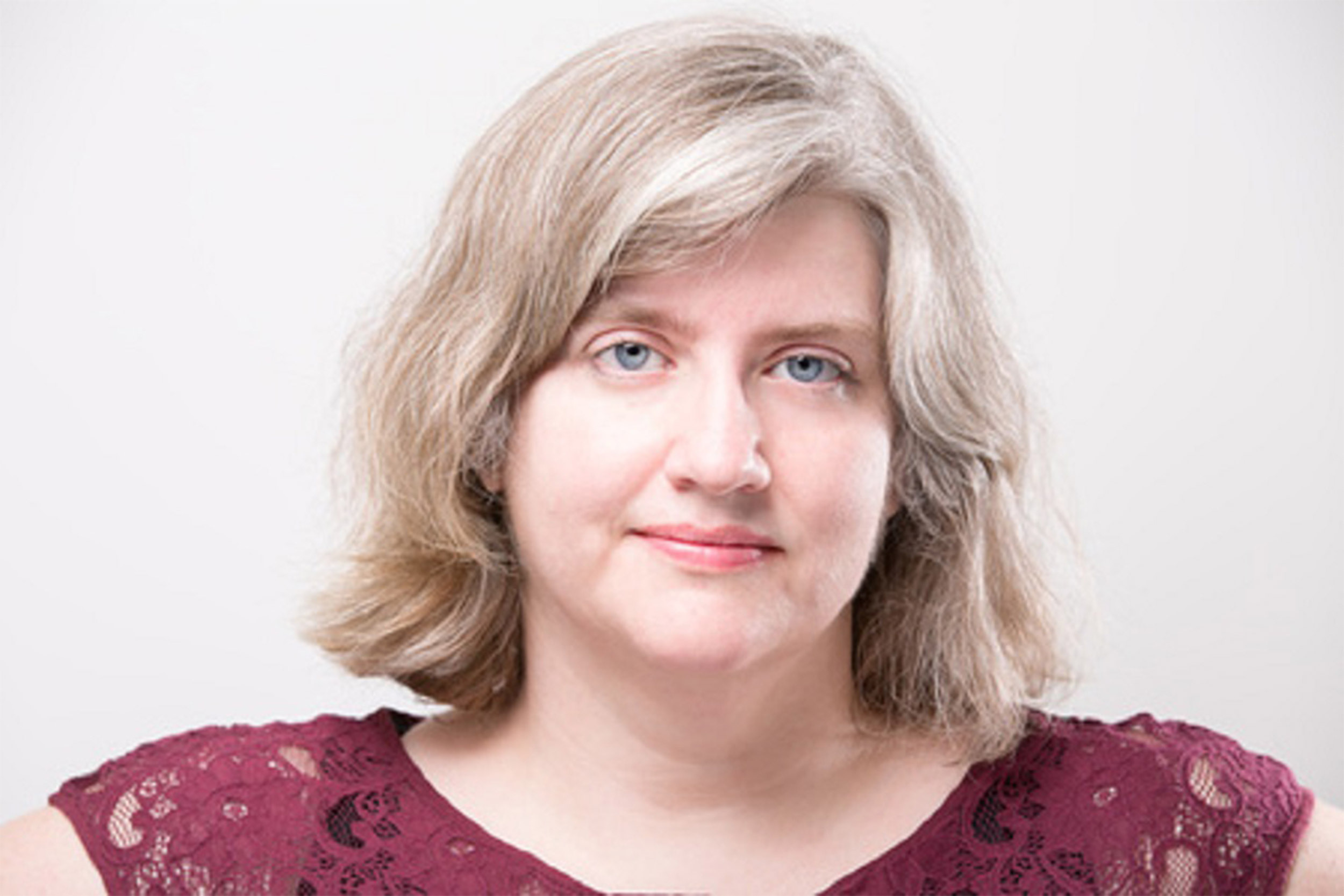
For shame machines, there is nothing more profitable than a painful and intractable scourge shrouded in mystery. False promises sell, and since they don’t work, the market stays strong. Failure, in fact, is central to the dieting business model, fueling earnings for giants like Weight Watchers and Jenny Craig. They profit from a never-ending stream of shame-addled, self-loathing repeat customers. Weight Watchers’ former chief financial officer, Richard Samber, told The Guardian that 84 percent of the customers failed in their diets and cycled back to the company. “That’s where your business comes from,” he said.
Weight-loss programs claim remarkable success nonetheless. Their marketing typically features dramatic before-and-after photos with deceiving statistics. It’s a textbook case of lying with numbers.
It boils down, as statistics often do, to self-serving choices about what to count. One 2011 study published in The Lancet, a prime example of such cherry-picking, found that a group of dieters at Weight Watchers lost twice as much as a control group that had access only to doctors’ recommendations. This sounds impressive. The catch? Funded by Weight Watchers, the study covered a period of only 12 months. This is too little time for the dieters to gain back the pounds. According to earlier Weight Watchers research, published in 2008, nearly four of five customers report losing weight in the first year. Yet this success rate plunges to a measly 16 percent after five years.
Darkening the picture even more, the threshold for this so-called success is laughably low. It involves retaining only 5 percent of the weight loss. Say a dieting customer in her early period of triumph drops her weight from 250 to 230 pounds. She poses for the “after” picture, wearing a big smile, and then proceeds to gain back 19 of those 20 pounds. At this point she weighs 249. And yet she has retained 5 percent of her weight loss. Statistically she’s a winner, though I’m betting she doesn’t feel like one.
In other words, diets that lead to dramatic and lasting weight reduction are statistical outliers. To make their case, diet companies play fast and loose with the word “successful.” And the studies they cite are almost always flawed.
Another problem has to do with human nature. We tend to share happy news, while keeping a tight lid on the stuff we’re ashamed of. Consider updates on Facebook. You see lots of graduations but not much about students flunking out of school.
The same goes for weight loss. Dieters feel euphoric early in the process, as the pounds melt away. It’s an achievement. They’re happy to talk. But they tend to clam up when the pounds return. Shame muffles their testimony, muddying the statistics. This results in what statisticians call “selection bias.” It skews industry data toward success stories, almost all of them short-term. In the 2011 Weight Watchers study, more people dropped out of the Weight Watchers group than the control group. This selection bias is yet another reason to be skeptical of dieting analyses.
Noom, a weight-loss program offering behavior modification, provides a prime example of marketing with sketchy statistics. The company targets upscale dieters, appealing to them in part through sponsorship plugs on National Public Radio. Most of its users are likely aware that diet programs usually fail — they even have a blog post titled “Why Diets Don’t Work” — so the company works this dreary fact into its pitch. “Deep down,” it says on its app, “you know this time will be different because you’re about to embark on the most modern weight loss course known to man or woman.” Noom provides new subscribers with a time chart showing how many months it will take them to reach their target weight. And it assures them that plenty of others following Noom’s formula have found success.
This is where the usual statistical games commence. Noom cites its own study claiming that 78 percent of its customers lost weight. Well, I’m glad I’m here to walk us through that research.
The analysis included 35,921 participants, all of whom installed the app and recorded their data two or more times a month for six consecutive months. How many other users signed up and never came back, or came back for three or four months — enough time to lose faith in the program? Those people weren’t counted. In fact, Noom’s decision to track only very active users is guaranteed to weed out people who have been overcome with shame. Selection bias, check.
What’s more, Noom rests its case on results gathered over the course of a single year, far too short a time frame. As the 2008 Weight Watchers study demonstrated, dieters who register dramatic weight loss in the first year are all too likely to gain it back in years two through five.
So, once again, while Noom makes money with bad science, let’s consider the human toll on the folks who “failed” on the Noom diet. They are made to feel not only fat but condemned to remain so. And it’s their fault. Like other toxic forms of shame, this one hinges on a false choice. This failure, as defined by the shame machine, disheartens them every day. It’s a lifelong blight. Many promise themselves that in the future they’ll work even harder. Next time they won’t drop their guard. They’ll persist. And they will blame themselves even more intensely when they regain the weight.
For businesses, the opportunities to make money from the shame surrounding fat people are boundless. One involves featuring them — the fatter, the better — in a spectacle. This is the premise of “The Biggest Loser” reality show. When the contestants appear on the program, they’re very big indeed, chosen to be cartoonishly “in need of help” by the diet industry. And the implicit message to millions of viewers is that they’re watching life’s losers.
This is a seductive message. Couch potatoes carrying an extra 40 or 50 pounds will feel downright svelte, and virtuous, watching these heavy people desperately trying to shed their pounds and their shame. “At least I’m doing better than him,” they think. It sounds cruel, and it is. But it’s also how we humans who feel shame often buoy ourselves up.
Every weight-loss technique on “The Biggest Loser” is unsustainable. Most are sadistic and perilous for the participants. They volunteer to submit to a near-starvation diet while pushing their bodies every day through hours of frantic exercise under the tutelage of trainers. All of these efforts are minutely tracked by videographers and data analysts.
“For shame machines, there is nothing more profitable than a painful and intractable scourge shrouded in mystery. False promises sell, and since they don’t work, the market stays strong.”
Rachel Frederickson, the 2014 winner, caused a viral sensation on the internet when she stepped on the scale at the finale and weighed in at a dainty 105 pounds. This was down from 260. She had lost more than half her body weight, and she walked away with $250,000 in prize money.
But once the show ends, those trainers and statisticians are nowhere to be seen. Life resumes its rhythms. Frederickson reported months later that she’d regained 20 pounds. It’s hardly surprising. In fact, a study of the contestants from the show’s eighth season found that the metabolisms of nearly all the contestants had slowed in the years following the competition. That meant they burned fewer calories at rest. Most of them regained weight, and four of the 14 studied were heavier six years later than they had been before their televised exhibition.
One person who will never show up on “The Biggest Loser,” much as the show would love to feature her, is the irrepressible singer, rapper, and flutist Lizzo. She’s deliciously round and doesn’t apologize for it one bit. She whirls and dances as she sings, and shakes her body for the crowd. In one video, she shares Cheetos with friends. Like many, she has gone through periods of body shame, according to interviews. But she seems to have won that battle resoundingly. Lizzo not only accepts herself but loves herself. She urges the audience to do the same, to celebrate life, and to deep-six their fat shame — in short, to be shame-free.
For a weight-loss industry anchored in people’s shame and self-loathing, Lizzo poses a threat. So it was no surprise in early 2020 that Jillian Michaels, formerly one of the trainers on “The Biggest Loser,” fat-shamed her. Speaking on BuzzFeed TV, Michaels said, “Why are we celebrating her body?” She added that it “isn’t going to be awesome if she gets diabetes.” When attacked on social networks for her fat-shaming, Michaels said: “It’s not about saying that I don’t respect her, or I don’t think she’s awesome. I absolutely do. But I also would hate to see her get sick.”
This kind of shame, where the shamer both denies and defends the tactic, is “concern trolling.” It’s vicious and condescending, and if you’re fat, you face it constantly. People raise health worries and offer advice. Some of them might think they mean well. But the implication, once again, is that there’s a choice. Lizzo has chosen to be fat. She is wrong. She should be ashamed and take it upon herself to mend her ways: She should diet.
This type of concern trolling is based on the assumption that it’s never occurred to the fat person to diet, or that they’ve never tried to before. And of course it’s predicated on the false premise that dieters fail only because they lack willpower and discipline (for which, of course, they should be ashamed).
Imagine that Lizzo, instead of being heavy, had epilepsy. In this case, her message to her fans might be that epileptic seizures were nothing to be ashamed of, nor an obstacle to becoming a global star. Would the same chorus of concern trollers urge her to get brain surgery for her condition or take stronger meds? I don’t think so, because epilepsy isn’t viewed as her “fault.” It’s not the result of a choice she made. Neither is being fat. Yet it’s considered as such. False choices, as we’ve seen, are the beams and joists that prop up shame.
Lizzo doesn’t need protection from concern trollers, because the trolling works only when the target is ashamed. She evidently feels fine about herself. Nonetheless, plenty of people rushed to her defense on social media. A few made excellent points. A writer named Melissa Florer-Bixler noted Lizzo’s athleticism and endurance in a since-deleted tweet. “Try running 7 MPH in heels on a treadmill clearly singing the words to ‘Truth Hurts’ without sounding out of breath,” she wrote. “Stop halfway to play the flute for a minute. Now start running again and finish the song. Now do this for two hours . . .”
The main takeaway, though, is not that Lizzo appears to enjoy robust cardio health. It’s that she’s living her life fully and not letting fat shame weigh her down.
In this respect, at least, she’s shame-free, or shameless. We usually use that word negatively. A kid peeing into a reservoir, for example, is shameless, because he’s unconstrained by society’s standards. But when those same norms, and the industries profiting from them, punch down on people, shamelessness can be a healthy and freeing response, even a superpower. In the realm of obesity, a strong dose of shamelessness is the potion we all need.
Copyright © 2022 by Cathy O’Neil. Published by Crown, an imprint of Random House, a division of Penguin Random House LLC. All rights reserved.



